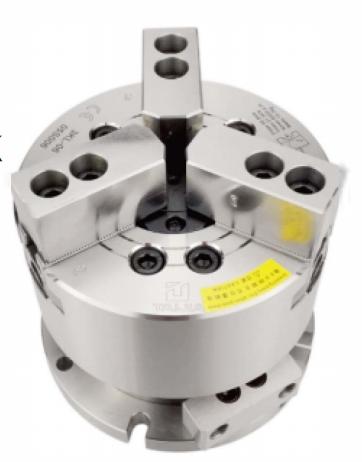When it comes to precision machining, the 3-jaw lathe chuck is an indispensable tool, celebrated for its efficiency and accuracy. This ingenious device simplifies the process of securely gripping cylindrical workpieces, making it a favorite among machinists worldwide. But what makes the 3-jaw lathe chuck stand out, and why should every workshop consider it essential? Let’s dive into its functionality, benefits, and applications.
What is a 3-Jaw Lathe Chuck?
A 3-jaw lathe chuck is a self-centering work-holding device used in machining. Equipped with three jaws that move simultaneously, it’s designed to hold round or hexagonal workpieces securely and precisely. The self-centering mechanism ensures that the workpiece is perfectly aligned with the lathe’s axis, reducing setup time and improving machining accuracy.
Key Advantages
-
Ease of Use
The self-centering feature eliminates the need for manual alignment. This simplifies the process, especially for repetitive tasks, making it a time-saver for professionals. -
Enhanced Precision
By securely gripping the workpiece, a 3-jaw chuck minimizes vibrations and misalignments. This ensures that the machining process delivers high-precision results, even for intricate designs. -
Versatility
While primarily designed for cylindrical and hexagonal shapes, a 3-jaw lathe chuck can also accommodate irregularly shaped workpieces with the help of soft jaws or custom attachments. This adaptability makes it suitable for a wide range of machining tasks. -
Durability
Typically made from high-strengt h steel, 3-jaw chucks are built to withstand heavy-duty operations. With proper maintenance, they can provide years of reliable service.
h steel, 3-jaw chucks are built to withstand heavy-duty operations. With proper maintenance, they can provide years of reliable service.
Applications in Modern Workshops
The 3-jaw lathe chuck is a staple in industries ranging from automotive to aerospace. Its ability to handle diverse tasks makes it invaluable for machining components like shafts, bolts, gears, and pulleys. Whether you’re performing turning, boring, or facing operations, this chuck ensures consistency and precision.
For hobbyists and small-scale machinists, it offers an affordable and reliable solution for creating complex designs. In larger industrial settings, it supports high-volume production without compromising on quality.
Tips for Maximizing Efficiency
- Regular Maintenance: Keep the chuck clean and well-lubricated to maintain its precision and longevity.
- Use the Right Jaws: Swap out standard jaws for soft jaws or custom options when working with delicate or irregularly shaped materials.
- Inspect for Wear: Regularly check for signs of wear or damage, especially on the jaws and scroll plate, to ensure consistent performance.
- Power Chuck



